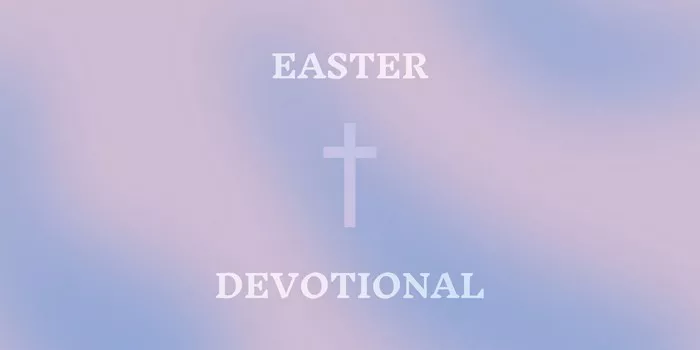The color purple has deep spiritual significance, particularly during the Easter season. It is a color that resonates with meaning in various religious contexts, especially within Christianity, as the faithful prepare to celebrate the resurrection of Jesus Christ. The color’s presence is not only seen in liturgical settings but also in home decorations, clothing, and church settings, making it an important symbol of the Easter holiday. But why purple, and what does it represent? This article will delve into the symbolic meanings of purple, its use during Easter, and its connection to holiday devotionals and spiritual reflection.
Symbolism of Purple in the Christian Tradition
In Christianity, purple is traditionally associated with royalty, repentance, and the suffering of Jesus Christ. During Lent, the season of preparation for Easter, purple is a color seen on altar cloths, vestments, and various liturgical items, signaling a period of reflection and penitence. The color is rich with symbolism, representing both the humility of Christ and the majesty of his divine nature. It is a reminder of the royal status of Jesus, the King of Kings, and his eventual triumph over death.
Royalty and Kingship
Throughout history, purple has been a color reserved for royalty and nobility due to the expensive nature of the dye used to create it. In ancient times, the dye was sourced from a specific mollusk, making it rare and costly. When purple was worn, it was a sign of wealth and power. This connection to royalty is significant when considering the role of Jesus Christ in Christian belief. His resurrection is seen not just as a victory over death, but also a confirmation of his kingship. At Easter, the color purple reinforces this message, reminding Christians of the royal nature of Christ’s sacrifice and his victory over sin and death.
Repentance and Reflection
During the Lenten season, purple is also used as a symbol of repentance and reflection. Lent, which is a time of penance leading up to Easter, invites Christians to reflect on their sins, seek forgiveness, and prepare their hearts for the joy of Easter Sunday. The somber nature of purple during this period reflects the introspective journey Christians embark upon in preparation for Christ’s resurrection. The use of purple in Holiday Devotionals during this time provides a visual reminder of this inner work of repentance.
Suffering and Sacrifice
The color purple is also associated with the suffering and sacrifice of Jesus Christ. Jesus was mocked, beaten, and crowned with a crown of thorns before being crucified. The royal purple robe that was placed on him by the soldiers in mockery represented their misunderstanding of his true identity. However, this event also foreshadowed his ultimate sacrifice and the resurrection that would follow. The color purple during Easter serves as a visual cue to reflect on this suffering, which is essential to the Easter narrative. Purple represents both the pain of the crucifixion and the triumph of resurrection.
The Meaning of Purple on Easter Sunday
On Easter Sunday, the color purple is often replaced by white and gold, symbolizing the joy and victory of Christ’s resurrection. However, the period leading up to Easter is marked by purple, signifying the journey of preparation, sacrifice, and reflection. The color acts as a bridge between the sorrow of Good Friday and the joy of Easter Sunday, offering a visual and emotional representation of the Christian journey through Lent and towards the celebration of Christ’s triumph over death.
The Role of Purple in Easter Decorations
During Easter, purple is commonly seen in decorations within churches and homes. Many churches will adorn their altars with purple cloths and candles, and purple is a frequent color in the flowers used for Easter services. Families may also choose to use purple in their home decorations to bring the spiritual significance of the season into their daily lives. Whether through purple tablecloths, wreaths, or Easter eggs, purple serves as a reminder of the spiritual meaning of Easter, inviting reflection and devotion.
Holiday Devotionals and Purple at Easter
Holiday Devotionals, such as those found at Holiday Devotionals, provide opportunities for Christians to dive deeper into the meaning of Easter and the symbolism of the colors associated with it. The use of purple in these devotionals is significant as it leads the faithful through a time of reflection, penance, and spiritual growth. These devotionals often include prayers, Bible readings, and reflections on the significance of Christ’s sacrifice and resurrection, all while utilizing the color purple as a focal point of reflection.
Conclusion
In conclusion, purple represents more than just a color during Easter. It serves as a powerful symbol of Jesus Christ’s kingship, his suffering, and the reflection and repentance required before celebrating his resurrection. From its historical ties to royalty to its use during the Lenten season as a sign of penance and preparation, purple embodies the deep spiritual truths at the heart of Easter. As Christians reflect on the meaning of Easter, the color purple invites them to consider the journey of suffering, sacrifice, and eventual triumph that leads to the resurrection. Through Holiday Devotionals, believers are able to connect with the deeper meanings of this season, offering both personal and communal opportunities for spiritual growth and renewal. The journey of Lent and Easter is marked by purple, reminding the faithful of both the sorrow and the hope that Easter brings.
Related topics:

